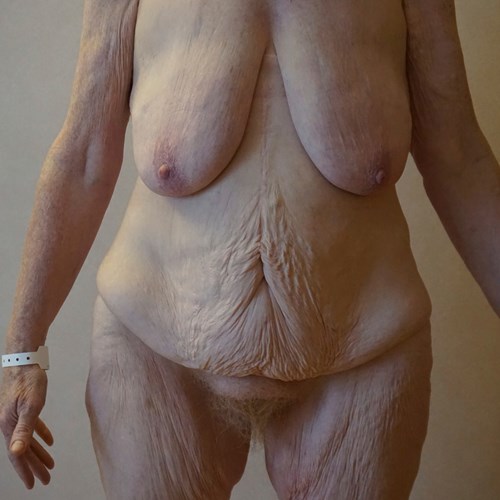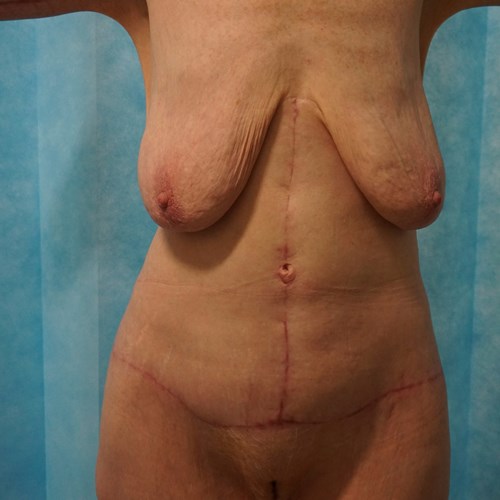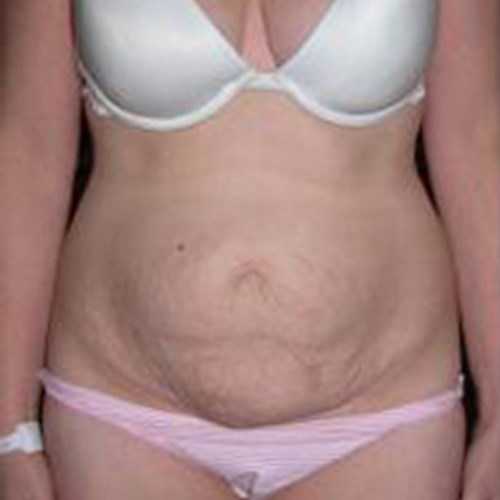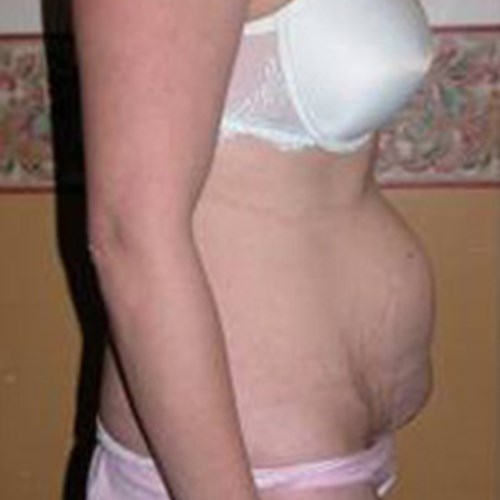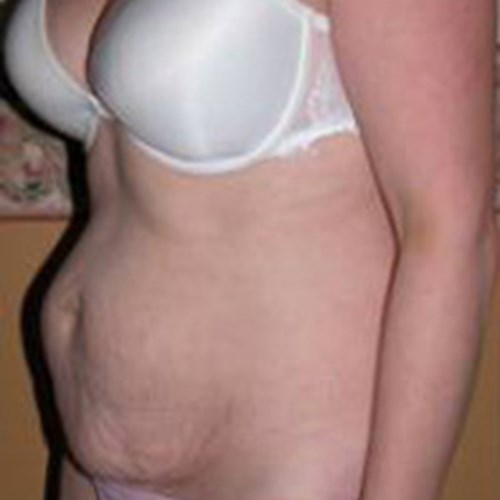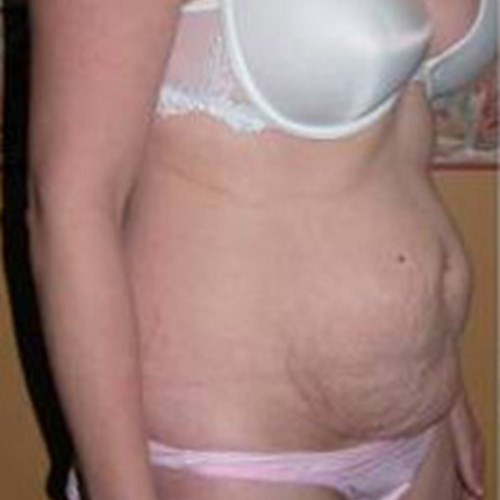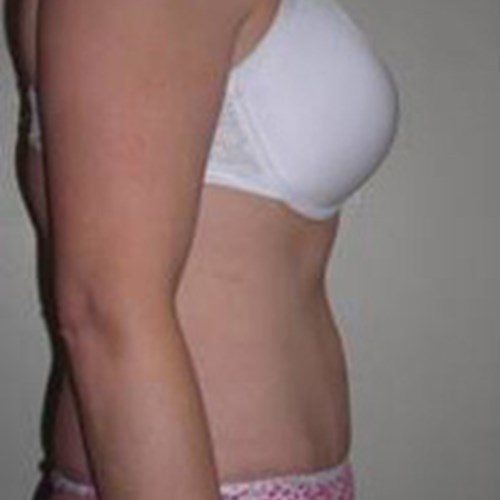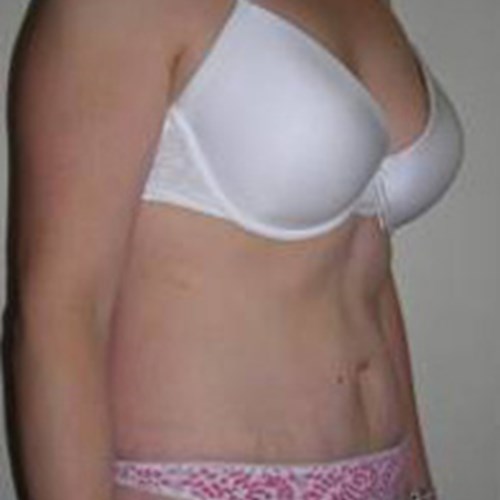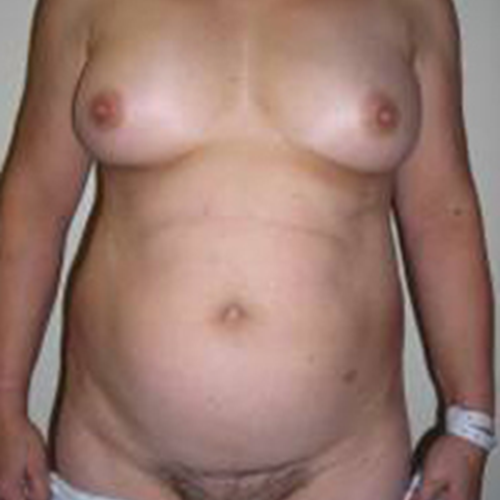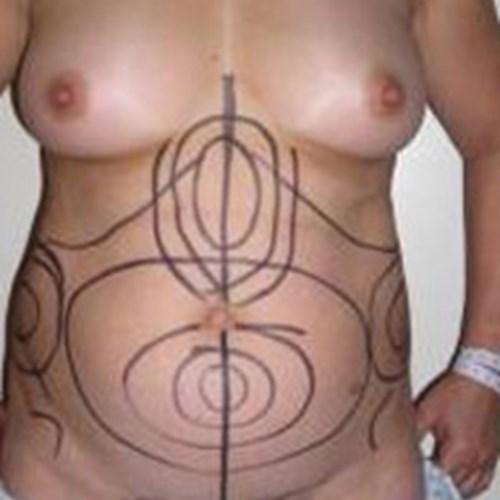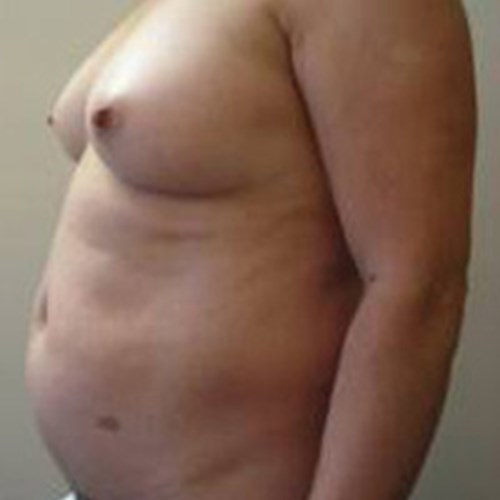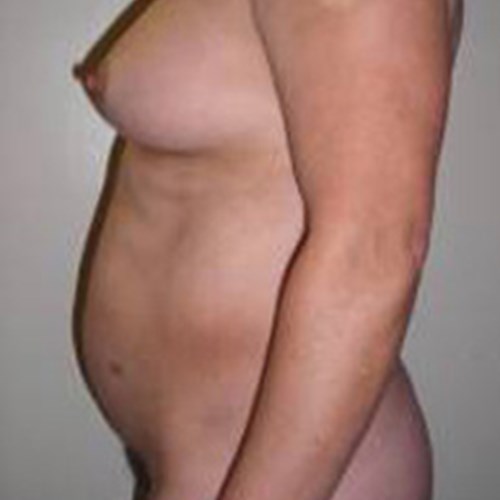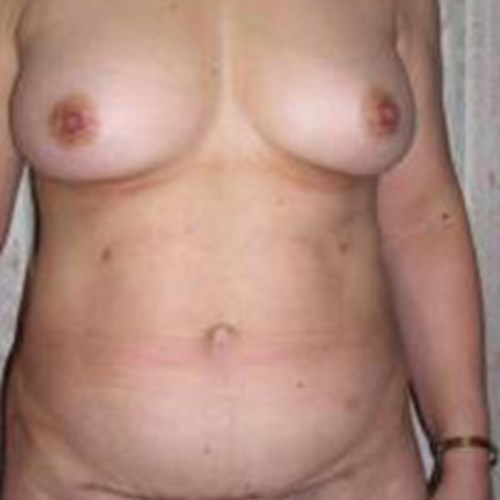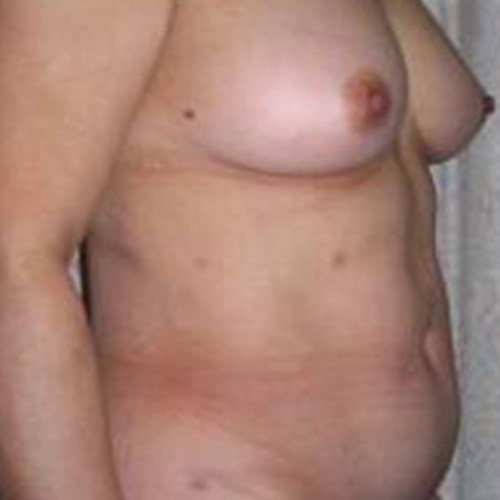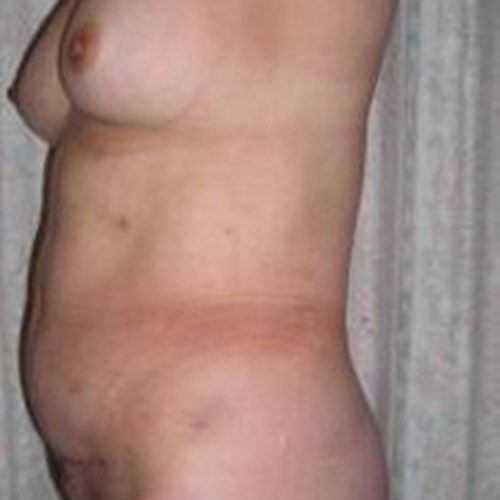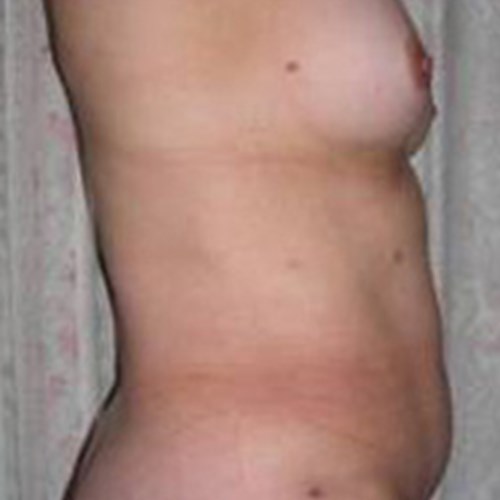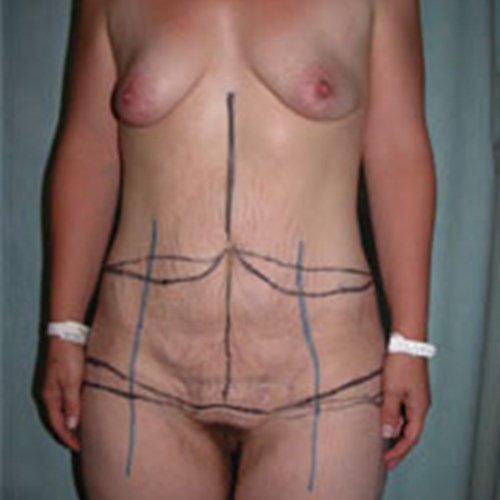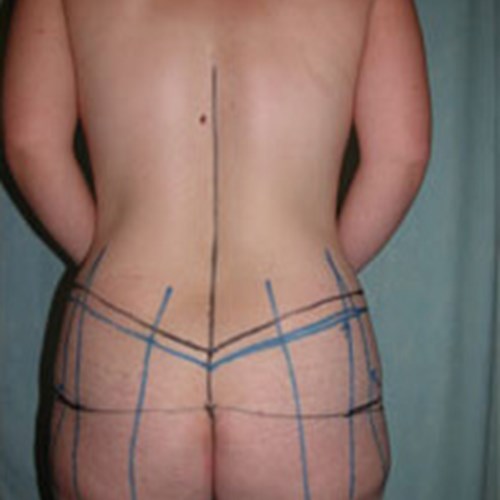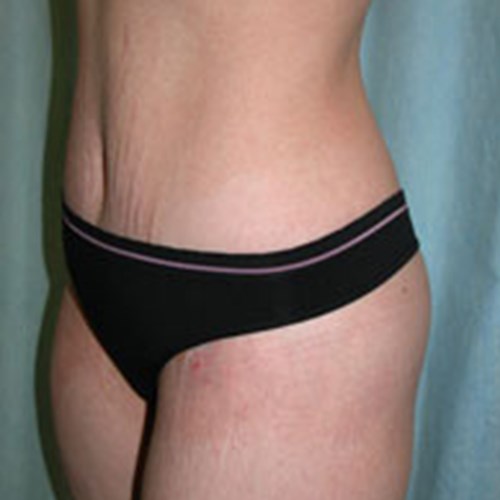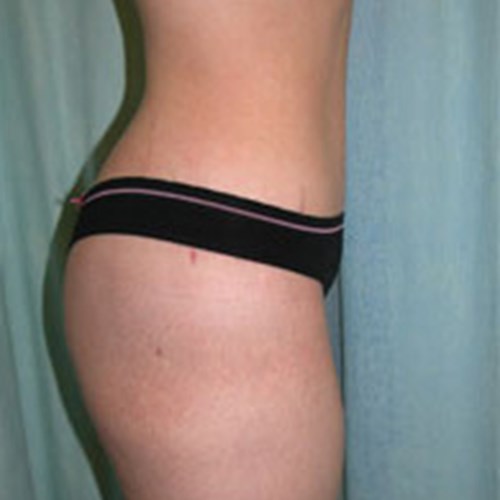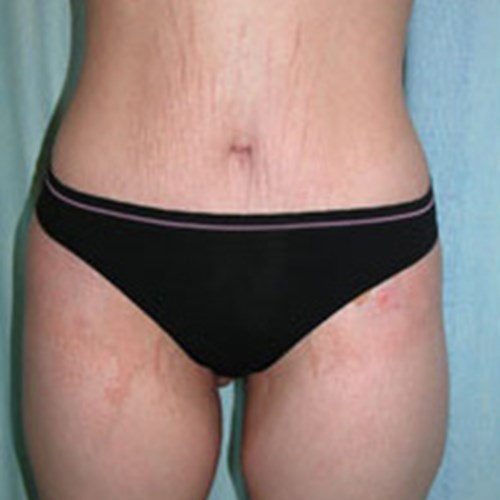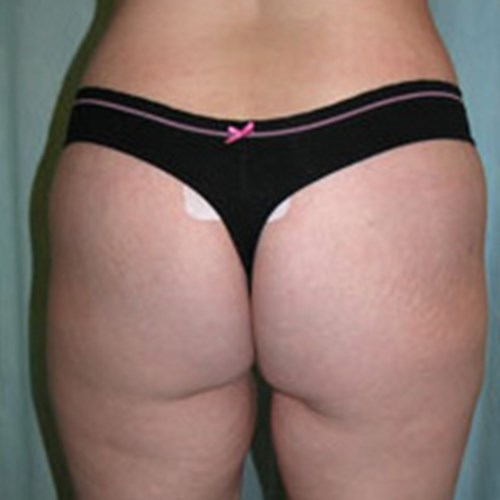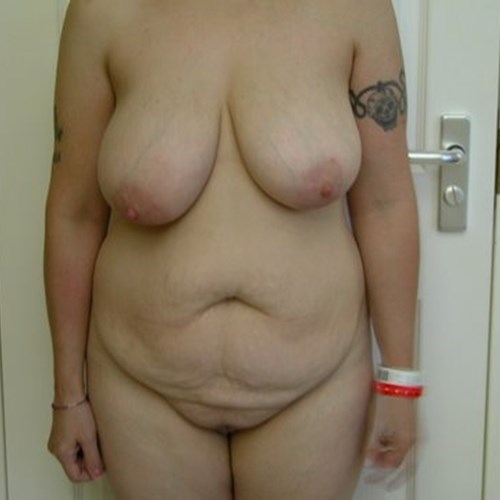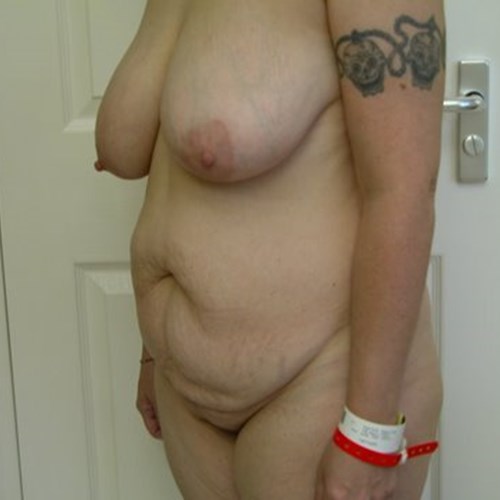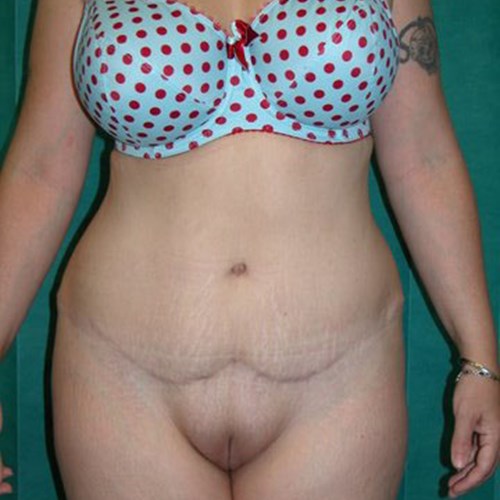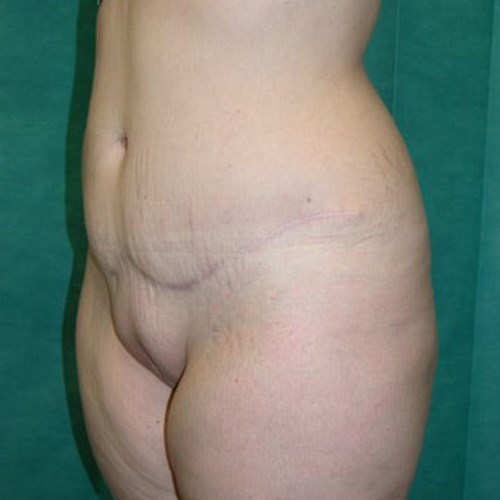Younger patients, who have not been pregnant before, who have good quality elastic skin and whose main problem is an excess of fat, are best suited to simple liposuction of the tummy. These patients typically have a little “pot belly” - a slight excess of fat in the lower tummy. Liposuction of the tummy can be performed under sedation and local anaesthesia, although general anaesthesia is most commonly used. These cases are often performed as day case surgery. Often, other areas are also treated with liposuction simultaneously. Small incisions are made, excess fat is removed and the wounds closed. Not only will fat be removed, but some degree of skin tightening or shrinkage can be expected as well.
Slightly older or middle aged patients who might have had previous pregnancies (causing the muscles to splay apart a little) and who have a slight excess of skin and fat, especially below the belly button, may be best suited for a modified/mini-tummy tuck. These procedures are performed under general anaesthesia. A wedge or ellipse of skin and fat is excised from the lower tummy leaving a scar horizontally above the pubic hair, similar to the scar from a Cesarean Section. In addition liposuction can be performed of the upper tummy and waist, and the muscles can be tightened. Usually no scar is left around the belly button which is stretched slightly to become more elongated, or moved downwards a short distance. Occasionally it is necessary to replace the belly button in a new place, and this can leave a small vertical scar. These various operation options will be discussed during your consultation.
Some patients have an even greater degree of skin laxity, excess fat and splaying of the muscles. These patients require a classic tummy tuck. This operation is usually performed under general anaesthesia and usually requires hospitalisation of 2-3 days. An incision is made from hip to hip and around the belly button. A large wedge of skin and fat is excised from the belly button to just above the pubic hair. Some areas may be treated with liposuction and the muscles above and below the belly button are tightened. Although this operation does leave the biggest scar, it does provide the greatest degree of improvement in shape. There are variations of full lower trunk rejuvenation possible. The standard ‘tummy tuck’ leaves a scar from hip to hip. The Fleur-de-Lys abdominoplasty provides circumferential tightening too but leaves an additional scar up the middle of the abdomen. Patients with flank and upper buttock laxity can opt to have circumferential tissue removal for flank and lower back/upper buttock tightening.
Patients still planning pregnancies should wait until completion of their family.
What can be expected at the initial consultation?
At the initial consultation you will be assessed as to whether you are a good candidate for abdominoplasty. Your abdomen will be carefully examined to assess the skin quality, the quantity of fat and the muscle tone. Your general fitness for the procedure will be evaluated and the potential for problems sought. It is important to know about previous abdominal surgery, pregnancies, medication that you are on, previous leg or lung clots and whether or not you smoke.
Your reasons for wanting the procedure will also be discussed. It is important that your expectations concerning the outcome of the procedure are realistic. If they are, you can expect to be happier with the result.
Once you have been fully assessed, an operative plan tailored to your individual needs will be formulated. The incision to be used, the amount of skin and fat to be excised, whether muscle tightening and navel repositioning is to be performed, and whether liposuction will be used as an adjunct will be discussed with you.
Do not be hesitant to ask questions, now or at any other time.
Medical aids or health insurance companies do not usually provide cover for this kind of surgery although occasionally a motivation can be done especially if you have lost large amounts of weight, or have a hernia.
Preparing for surgery
Ideally surgery is performed when you are fit and healthy. No special diet or exercise program is required prior to abdominoplasty, but you should be close to your ideal weight. It is a good idea to have a good fluid intake for a few days before your operation. You should not have been on a long-haul flight for 2 weeks prior to surgery.
It is advisable to stop smoking at least six weeks prior to surgery and not to smoke until your wounds have healed - usually about two to three weeks after the operation. It is well known that there is a higher frequency of complications in patients who smoke.
On the morning of surgery you should wash well. Do not shave your pubic hair specifically. Prior to surgery, the incision lines will be marked with a pen in your room. Mr Soldin usually takes photographs for your records immediately before surgery.
The Surgery
Surgery will be performed in an operating theatre usually under general anaesthesia. A full tummy tuck takes between two and half and three hours, a mini between one and one and a half and liposuction of the tummy alone, about an hour. Occasionally a urinary catheter may be needed.
Following surgery the wounds are closed with dissolving sutures, and drains may well be left in place for a few days. Dressings and an elasticised garment will be applied.
What can be expected after the operation?
Following the operation you should be relatively pain free although you may feel some discomfort with movement. Post-operatively, you will be given painkillers that will control any discomfort. You will be allowed to eat and drink once you are awake. If you are an in-patient, you will be well looked after in hospital and gentle mobilisation will be started as soon as you are awake. Daily showers are encouraged.
If you are to have surgery as a day case, you will only be allowed home once you are fully awake, able to walk and talk and once you have had something to eat and drink and have passed urine. Someone will need to drive you home and look after you. You will be given painkillers to take home with you. At home you should rest for the first night. It is a good idea to have some extra pillows to place under your knees, as you will find it most comfortable to sleep on your back with your knees up. On the first day after surgery, you should try to get up into a comfortable chair and would be encouraged to walk around within the house.
How long does it take to get back to normal?
Healing is a variable process and it may take you a month to feel like your old self again. People vary enormously in their recovery period.
The scars are healed by the end of the first week, but continue to mature for up to a year, by which stage they should be thin, fine, inconspicuous lines. Massage of the scars with an aqueous cream helps, but should only be started after 1 month.
The drains are usually removed a day or two after surgery when the drainage has diminished to acceptable levels.
Bruising takes about 2 weeks to settle. Swelling can take months to settle. To help diminish swelling and bruising abdominal support should be worn for 24 hours a day – you can take it off for regular showering.
You will find that contrary to what you expect, your mood may be down following surgery. This is a normal occurrence and as the swelling and bruising subside and your body heals, so your mood will elevate and improve.
Mobilisation should be gentle, but begun early. Immediately after surgery you should start with wiggling your toes and ankle and knee movements to help prevent leg clots. Avoid crossing your legs in bed. On the first postoperative day you should mobilise to a chair, walk to the bathroom and a little around your room. Thereafter mobilisation should progress so that gentle exercises can be begun about one month after surgery. Vigorous exercise should be avoided for six weeks, until you feel comfortable – your body will tell you if you are pushing it too hard.
At home you need to take it easy but do not take to your bed. You will need help if you have small children for 1-2 weeks. Gradually increase your walking day by day. Do not drive until you really feel well – usually 2 weeks. Shower daily to stay clean. If your corset becomes blood-stained wash and dry it before reapplying it.
Depending on the procedure you have, you may be able to begin work after about one week (liposuction), 2-3 weeks (mini/modified tummy tuck) and longer, possibly up to three weeks or more for a full tummy tuck.
What are the risks?
When performed by a qualified plastic surgeon, abdominoplasty is normally safe and the results predictable. Nevertheless, as with any surgery, there is always a possibility of complications, including the following:
Sensory alterations in the area - numbness below the belly button occurs in nearly all patients but is usually transient. Can take up to two years to resolve.
Bleeding (early or late) which can lead to fluid collections. These may require drainage with a syringe or, rarely, repeat open operation.
Infection at the operative site or elsewhere (e.g., pneumonia)
Loss of tissue, especially low down, near the scar or of the belly button. Usually small and treated with dressings.
Unsatisfactory scarring - usually not keloid, but scars can stretch or become raised and red.
Asymmetries or irregularities in contour, the commonest being dog-ears at the ends of the scars. These may require simple revision under local anaesthesia.
Clots in the legs which can migrate to the lungs
Problems with anaesthesia, drugs, fluid balance, urine output, etc. These should be rare and the risks will be explained to you by your anaesthetist.
Will the new look last?
Abdominoplasty, whether mini, classic, or Fleur-de-Lys produces excellent results for patients with weakened abdominal muscles or excess skin and fat. In most cases the results are long lasting, especially if after the operation you avoid weight gain, follow a balanced diet and exercise regularly.
Checklist before coming into hospital
Organise suitable abdominal support – snug, but not too tight.
Bring all your usual medication, toiletries and pyjamas.
No smoking (six weeks), and no aspirin or any other medication that thins the blood making bleeding more likely (2 weeks) before the operation
If you are worried post-operatively
Telephone the ward of the hospital from which you have been discharged.
Telephone my secretary Angie Harrison during office hours – 07961221874
In an emergency (and you have failed to contact me by the above two methods) then please telephone St George’s Hospital (020 8672 1255) and ask them to either bleep me or the Resident Plastic Surgery doctor on call (Bleep 7050).
